Exploring the Chitabe Concession
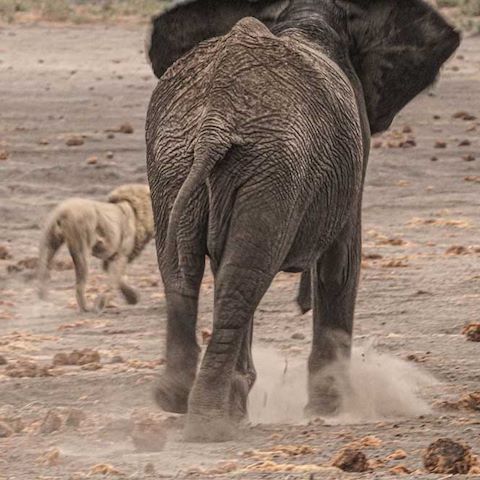
The bush is dry now, meaning there is excellent visibility for wildlife. Temperatures over the past two months have been very warm, with a maximum of 37° Celsius, and minimum 25°C. Early morning drives with a packed breakfast were a highlight for many of our guests who got to explore our Chitabe Concession. They would head back to camp around midday as it got warmer – unless there was a need to stay out longer, which actually happened unexpectedly to a few guests. Our afternoon drives left at 16h30 as the temperatures started to cool.
Why choose Chitabe?
Wildlife sightings are nothing short of spectacular with fascinating behaviour manifested as the animals interact with each other and with their environment – from predators to antelopes, elephants, birds, and all the big cats’ cubs. Our team of guides have a combined wealth of knowledge, experience and respect for the environment, leading our guests on safari while taking their interest and preferences into account. Our guests are captivated by the variety of breath-taking sightings on their exclusive and intimate safaris, sharing photos and stories of truly remarkable moments in the wild.
Summer is approaching, though we have only had some light drizzle so far. Our northern boundary with Moremi Game Reserve is the Gomoti River – an area that consistently surprises and delights our guests with unforgettable adventures and phenomenal biodiversity. Our guests and guides always come back from the Gomoti sharing memorable sightings that serve to highlight the magic of Chitabe.
We have a waterhole near camp, as well as a large lagoon that fills with the seasonal Delta waters. These two water sources provide a relaxed afternoon of game viewing for our guests, as many animals head there to drink towards the end of a hot day, and we always see incredible numbers of elephant, buffalo, kudu, zebra and many more general game species.
Lion sightings at Chitabe
A new lion pride numbering 10 is still being seen sporadically, providing amazing and fascinating sightings. They specialise in ambushing the buffalo at the lagoon on the western side of camp, and our guests had many opportunities to witness it themselves.
Some of the most unforgettable sightings were of another pride of four lionesses with 10 cubs, a pride comprising a lioness with two sub-adults, and two different coalitions of four each fully grown male lions.
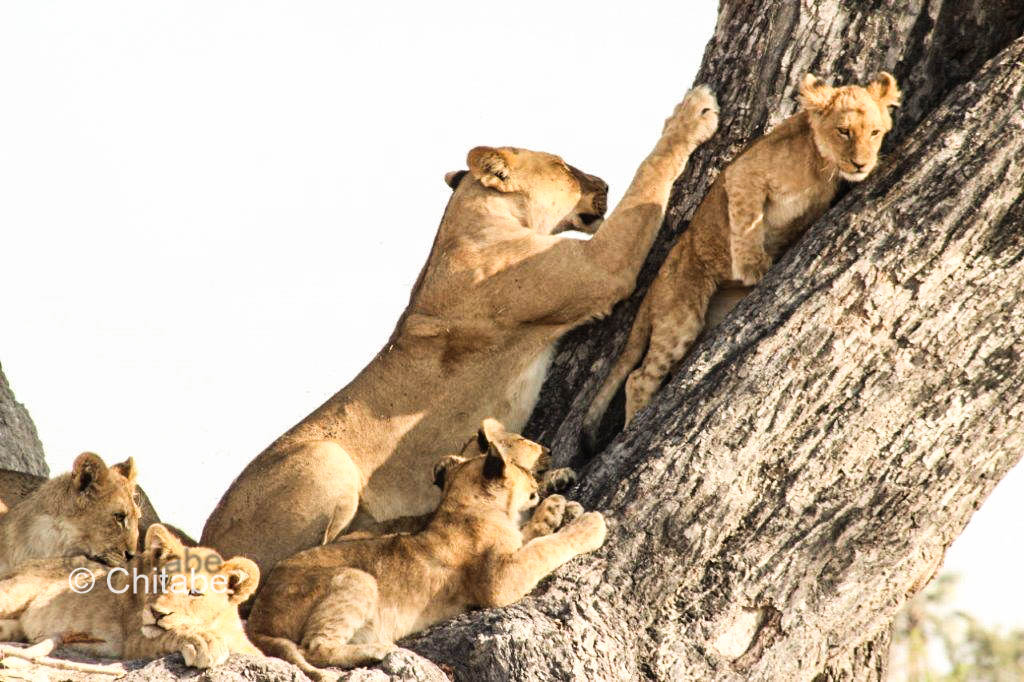
The prides of Chitabe
The four young females of Tsame Pride have 12 cubs and after spending weeks in their separate dens, the lionesses recently introduced their cubs to each other. What a great spectacle seeing all 12 cubs together, and such a privilege to watch their intimate, and gentle, moments. Our guests had the incredible opportunity of watching these playful lion cubs strengthening the bonds between them with their boundless energy. They played predator-and-prey games, chasing and wrestling each other. Watching the interaction between the mothers and their young ones is many people’s favourite experience in the wild. When it comes to photographic opportunities, by happy coincidence the cubs will often pose the way we wish, and surprise us with their antics and expressions, creating fantastic photographic opportunities.
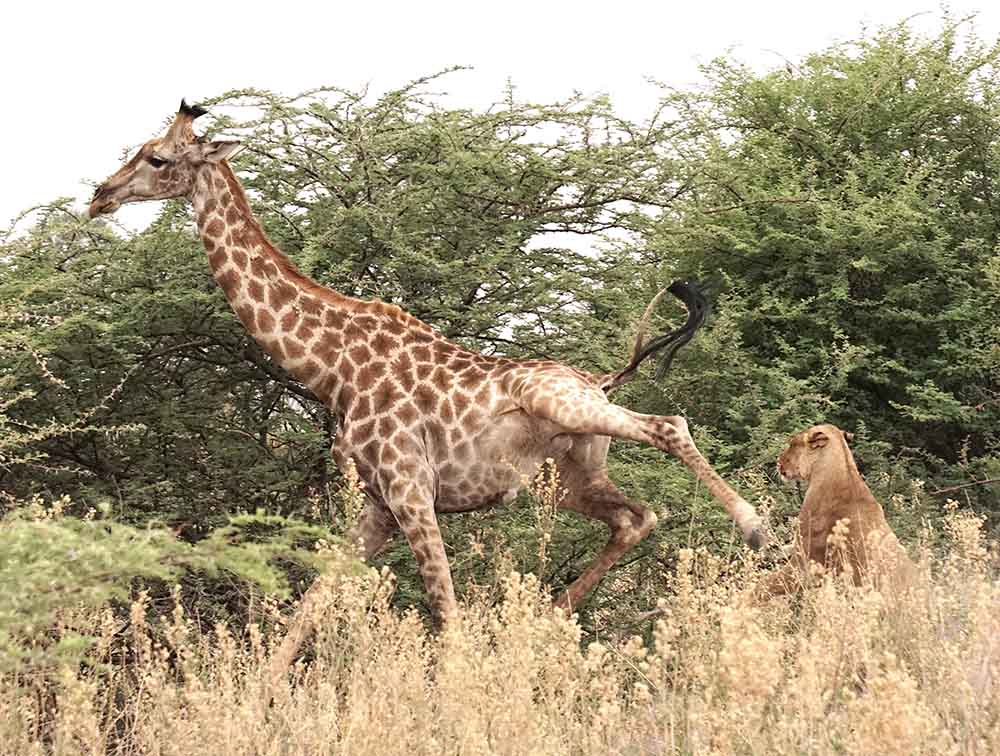
Managing 12 lively cubs is not an easy game for the lionesses, and before they leave for hunting, it is always fascinating to watch them working hard to round up the cubs and put them in a safe place where they won’t be seen or heard by other predators. Naturally it is not easy for the lionesses to hunt successfully while being followed by so many cubs, which limit their pace and can be very vocal when on the move, behaviour that slows down the hunting process. The bush is also full of traps for cubs if are too mobile at this vulnerable age. Calling the cubs to order when they disturb the mothers on their naps is tough for the lionesses, but the cubs enjoy playing with their mother tails.
All these prides fed very well throughout the months, and we observed them on buffalo kills, elephant carcasses, zebra kills and prey as small as warthogs. Some of the highlights include eight lionesses from Tsame feeding on an elephant carcass near the waterhole; two of the five dominant males feeding on a baby elephant carcass near the Gomoti River; seven of the Matsebe Pride feeding on an elephant near camp; four large male lions feeding on a buffalo; four male lions feeding on a buffalo calf; and the four Tsame lionesses with their 12 cubs. Four lions from the Mmakgosi Pride killed a male buffalo in front of Lediba while the Matsebe Pride killed a zebra. One lioness with two sub-adults also killed a warthog.
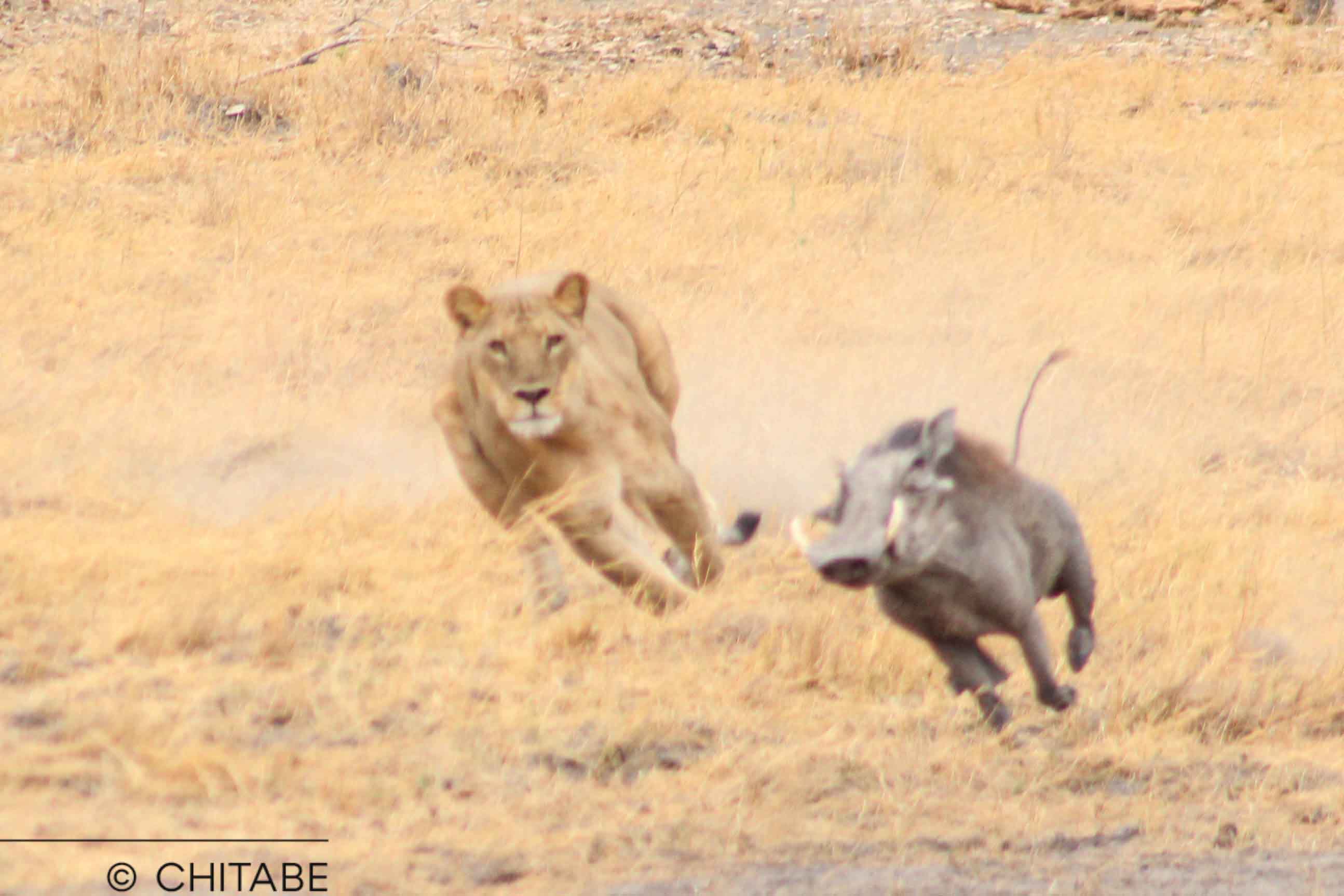
Chitabe’s famous cheetah, Supermom
Supermom was seen many times, strolling gracefully across the open plains near the Gomoti River with her two cubs, making his place her hunting ground for several consecutive weeks up to now. This is a transition area between the river and the woodland, and where their primary prey – impala – move through, coming from the woodland to the water, and vice versa.
Supermom and her cubs are never short of a meal here. She has hunted, chased and killed in front of many of our guests who felt lucky to witness these encounters that deliver one of the most exciting wildlife experiences. We watched her often as she went from a relaxed state to a full-speed sprint while attempting to catch impala that were unaware of her presence. Watching a cheetah chase is always a great moment of pure speed and precision. Her two cubs are slowly maturing, and learning valuable hunting and survival skills from their mother. We observed at least eight of Supermom’s kills over the last two months.
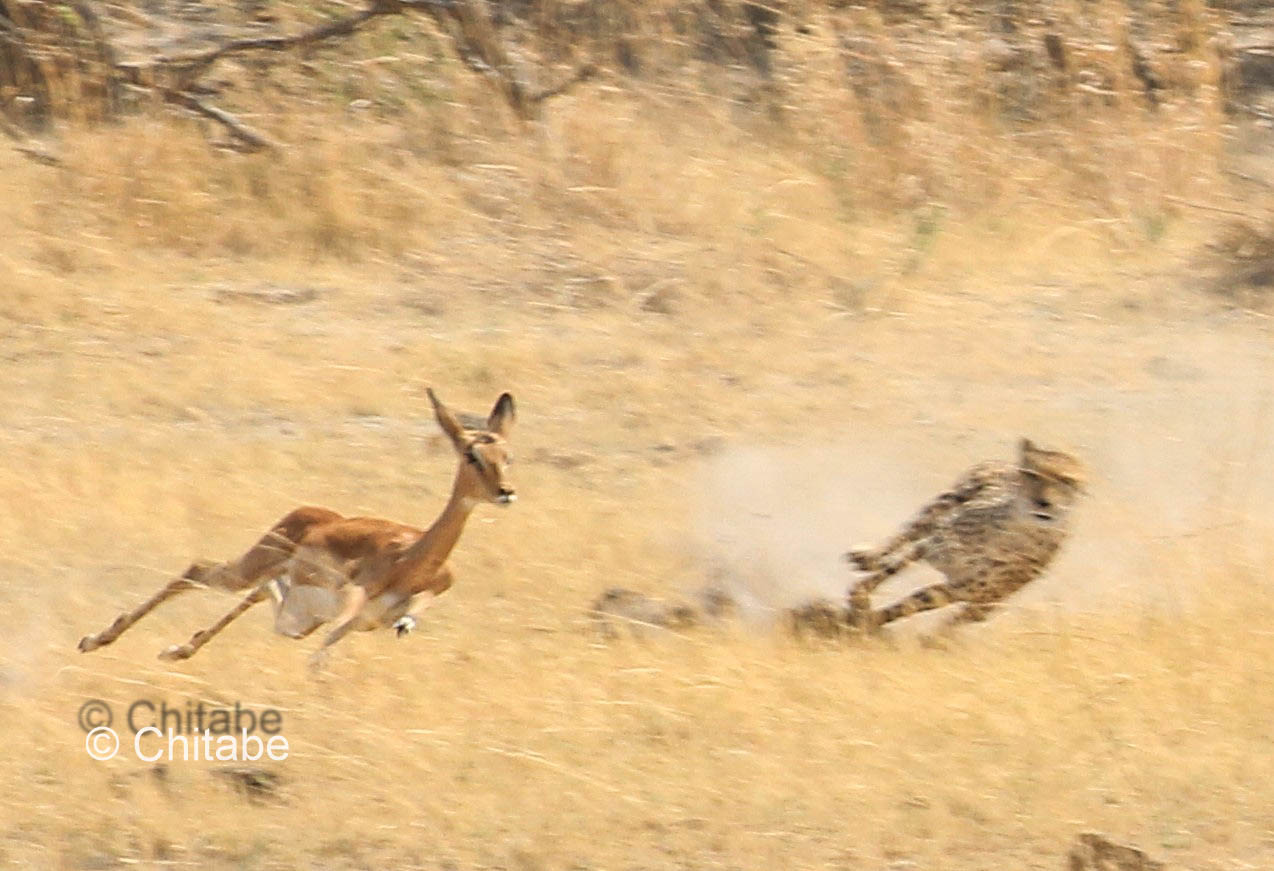
Other cheetah highlights included a single female killing an impala not far from camp. We had seen her few occasions before, although she had been gone for a long time. A single female with one sub-adult cub was sighted near Gomoti River, and a young male was seen on a hunt near the airstrip, though unfortunately he missed his impala prey.
The not-so elusive leopards of Chitabe
Although leopards are known for their elusive nature in other places, our leopard sightings in the last two months have been extraordinary, and a great reward for our guests. We had leopards perched up in trees keeping an eye on potential prey; we also watched leopards running up trees with their kills – a spectacle of strength and agility that many of our guests had the opportunity to photograph. Just in the area surrounding camp, we recorded at least two full-grown male leopards and five females that localised their territories not far from camp. Their territories that overlap but they respect each other’s space. A female named Tswale Tswale made a couple of impala kills near camp, but otherwise we didn’t see much of her because of her more typical skittish nature.
Other highlights include seeing the Maun Road Female with her active male cub feeding on an impala carcass up in a tree; she has clearly lost her female cub since its now two months without seeing her. A female called Mosadinyana was seen with her new cub recently, while one of the big males, Rradikolobe, was seen mating with two females at the same spot (Rose and Zala). We also recorded the Leadwood Female with her two young cubs, and another big male cub believed to be her older cub, the Old Hide Female on a kill with her two cubs, and in the past two months, we also had two new female leopards recorded in our research data. Rose was seen on a kill near camp, with Rradiphala, the big male spotted on an impala kill. Rradikolobe was sighted feeding on a buffalo that lions had left near Lediba camp.
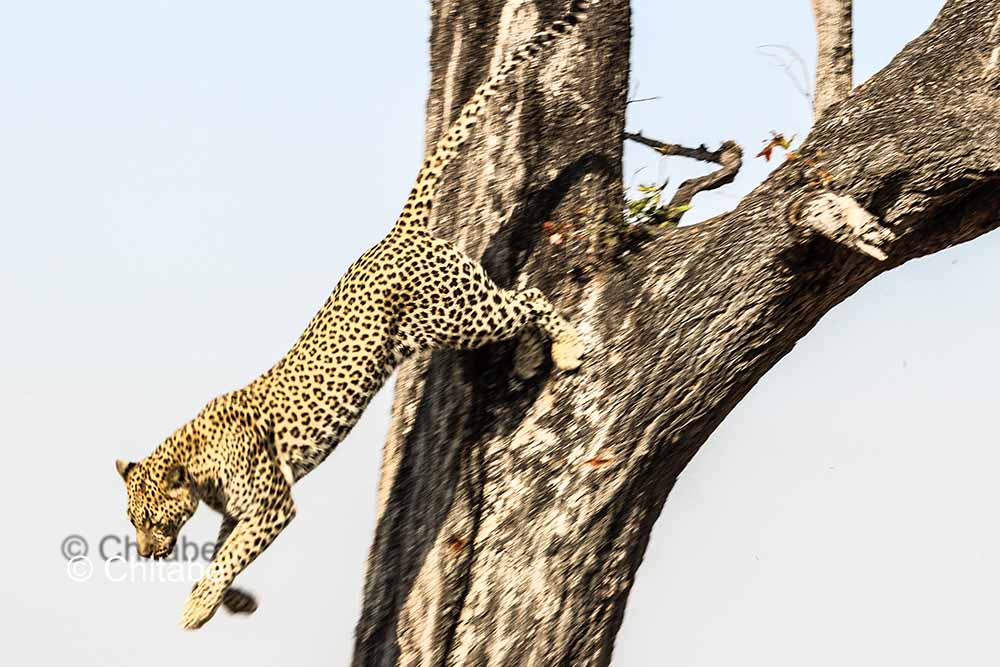
Chitabe’s iconic wild dogs
The wild dogs left their den with their 11 puppies around mid-September, and we have had sporadic sightings of them as they come in and out of our area. Every time they are in the area, we followed them hunt and kill, always a spectacular experience. The way they work together to co-ordinate a chase and strategically surround and exhaust their prey is fascinating to watch. Although the puppies left the den while still young, and would normally be placed in different dens for a day or two until they regain the stamina required to travel long distances, this time, the pack struggled to control the puppies, which were very active, always wanting to follow the adults. They ignored the instructions from their babysitters, which struggled to contain them. They were constantly on the move and would run after the pack until the pack gave up and aborted their mission, turning back to attend to the puppies.
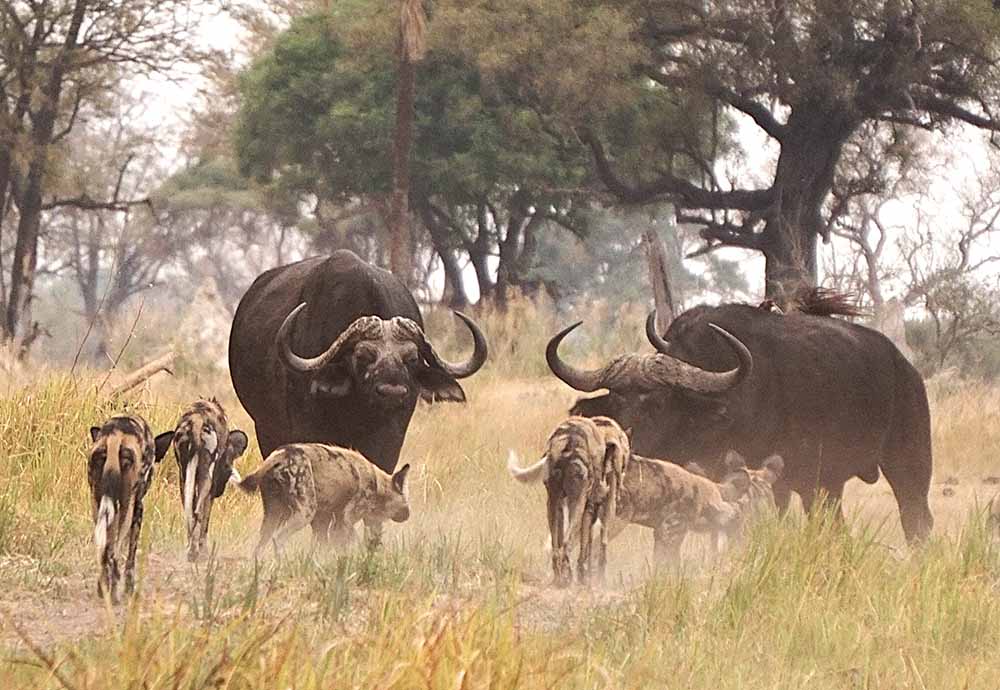
General wildlife
General wildlife sightings included large herds of elephants swimming and drinking, large herds of red lechwe, as well as hippos and buffalos – while not forgetting the incredible birding along the river.
Elephants were seen often, and in large herds along the Gomoti River, which provides a great source of both food and water for them; they particularly like the aquatic vegetation found in the shallow waters.
We also viewed large herds of buffalo around the Gomoti River where they enjoy the permanent water and very palatable grass. Isolated, small herds of male buffalo were also seen frequently at the pool not far from camp where there is also permanent water.
Hyenas were seen in larger numbers on a few elephant carcasses; they are nature’s opportunists, making the most of every moment to survive. We also had numerous extraordinary and frequent sightings of smaller mammals such as honey badgers, African wild cats, civets, servals and porcupines.
Birds of the Chitabe Concession
Chitabe’s habitat diversity allows our guests to see a unique array of birdlife. As well as the prolific smaller species, we have see impressively big birds such as the kori bustard, ostriches, ground hornbills, goliath herons, Verreaux’s eagle-owls and a variety of birds of prey. Almost uncountable numbers of water birds are sighted along the Gomoti River.
Many of our Chitabe guests capture the most incredible images that tell powerful stories of nature, and we are delighted when they are happy to share these images with us.


Let’s plan your next journey
Ready?
When we say we’re there every step of the way, we mean it, literally. From planning the perfect circuit, to private inter-camp transfers on Wilderness Air, and easing you through Customs. We’re with you on the ground, at your side, 24-7, from start to finish. Ready to take the road less travelled? Contact our Travel Designers to plan an unforgettable journey.